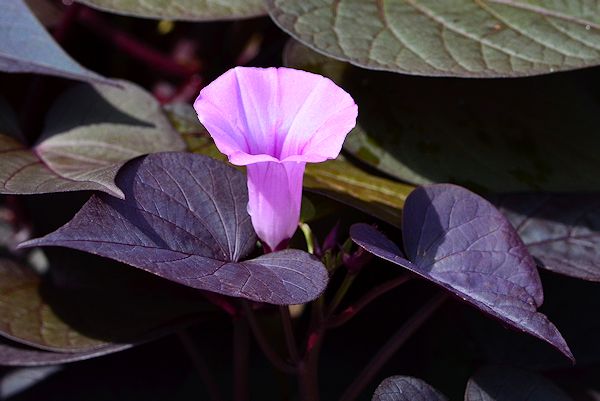
Make sure that you don’t let these pests cause damage to your plant.

You must also make sure that the plant is protected from leaf hoppers and aphids. Once the flowers have dried out, you can collect seeds that are present in ripened conical seed head. Also, remove the spent flowers and foliage. The blooms start appearing during summer, which is why pruning should be done before the bloom season starts. These plants can grow up to a height of 3 to 4 feet, so make sure that you prune them from time to time. Once they are well-established, they can survive with very little water also. During the first bloom season, water them adequately. Newer varieties come in single and double forms and new coneflower colors such as orange, green, peach and coral. It is named for the spiny cone-shaped flower center encircled by slender petals in shades of pink, purple or white. Even if you don’t amend the soil by adding fertilizer, these will grow. Coneflower ( Echinacea) is native to prairies and open woodlands of North America. These plants are quite hardy, and grow well in ordinary garden soil, but ideally the pH of the soil should range between 5.5 to 7. If you are planting them in flower beds, then make sure that you plant them at least 20 inches apart. If you are propagating it through division, that is dividing its clumps or roots, then the best time to do it would be during the spring or fall. Plant them outdoors after 9 to 10 weeks in early fall. If you are sowing the seeds indoors, make sure that the room temperature is between 65 to 75 degrees Fahrenheit. The process of seed germination will start within 3 to 4 weeks. Long-lasting, the showy blossoms are borne atop strong erect stems clad with coarse, lance-shaped, dark green leaves. The soil should be well-drained, and the seeds must be sown at a depth of half an inch. A popular perennial, Echinacea purpurea (Purple Coneflower) is an outstanding herbaceous perennial boasting a profusion of large, daisy-like, purple coneflowers, 5 in. Whereas some purple cultivars are undependable, ‘Pica Bella’ is a consistently strong, long-lived coneflower with an abundance of quirky flowers from late spring to autumn. Make sure that you select an appropriate planting site. For about 15 years, I’ve been recommending ‘Pica Bella’ to gardeners who desire a reliable, traditional-looking purple coneflower.

If you are sowing it outdoors, then the best time to do it is during the late spring or summer. Its flowers are similar to our native Echinacea angustifolia ( Narrow-leaved Purple Coneflower), which has mostly basal leaves that are long and narrow.You can propagate it by sowing the seeds. Eastern Purple Coneflower is not native to Minnesota, but is common in roadside plantings, both urban and rural, as well as increasingly a garden escapee.

Affected plants should be pulled and can be left in the garden as they pose no risk to healthy plants after uprooting. It can make for thick showy stands in the garden but is subject to aster yellows, a phytoplasma spread by leafhoppers that affects a large number of herbaceous species and causes stunting and yellowing of the foliage and blasting of the flower heads. Stems are mostly unbranched, typically brownish green.Ī native of eastern moist to mesic prairie, Eastern Purple Coneflower is the species typically found in the nursery trade and many colored variants are becoming more common.

Stems and leaves are smooth or hairy to varying degrees. There are so many variations in wild, however, and with native plants it is not unusual for its flowers to appear to be any color: deep violet, pinkish, or lavender. As the name implies, the petals of this flower are a lovely shade of purple. Purple coneflower (Echinacea purpurea) is a native wildflower. Leaves have serrated edges and 3 or 5 distinct veins along the length. Jardins de Callunes, via Wikimedia Commons. Leaves are mostly alternate, sometimes opposite, 3 to 6 inches long, 1 to 3 inches wide, lance-like, broader at the base, tapering to a point, stalked, becoming smaller and stalkless as they ascend the stem. In the center is a large orange-brown disk, round to conical in shape, covered in tiny disk flowers with yellow pollen. The purple coneflower plant has a hairy and robust stem that can grow anywhere from 2 feet to 4 feet in height. Rays grow out and up, curving down with maturity. Echinacea is included in the botanical garden, not only because it is a beautiful non-native flowering plant, but also because of the medicinal properties of. The 2023 season brings us several firsts, including the first-ever groundcover shasta daisy, Leucanthemum 'Carpet Angel,' from Green Fuse Botanicals. Flowers are single on end of stout stem, with 15-20 rich pink to purplish rays (petals), each 1½ to 3 inches long and ¼ to ¾ inch wide, with 3 notched teeth at the tip.


 0 kommentar(er)
0 kommentar(er)
